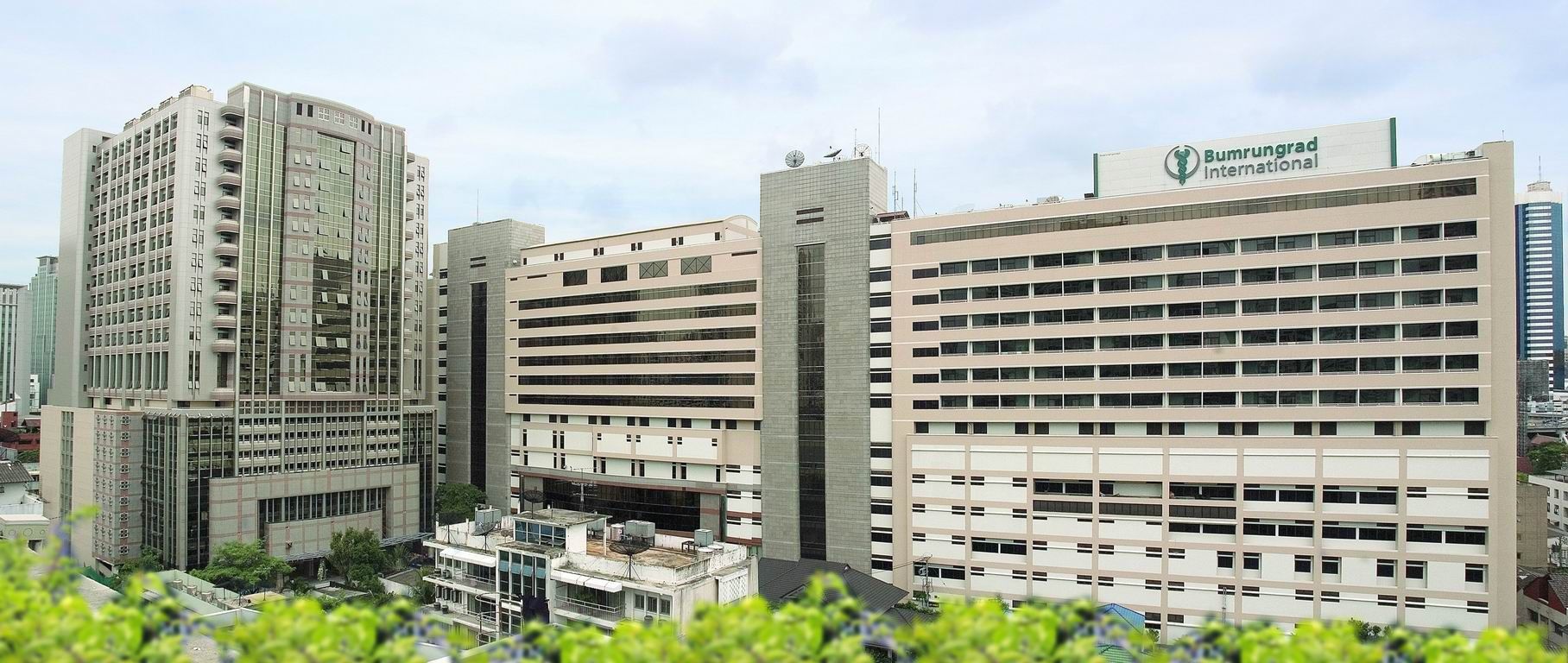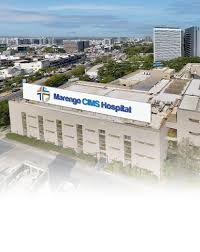Dental
Maxillary Le Fort 1 Osteotomy Treatment
Maxillary Le Fort 1 Osteotomy
The Le Fort I osteotomy is one of the most common procedures used for correcting the midface deformities. It allows for correction in three dimensions including retrusion, elongation, shortening, and advancement. It is indicated, usually in the conjunction with mandibular surgery, for class II and III malocclusion, obstructive sleep apnea, maxillary atrophy, and facial asymmetry.
Overview
The Le Fort I osteotomy is one of the most common procedures used for correcting the midface deformities and is also known as orthognathic surgery treatment.. It allows for correction in three dimensions including retrusion, elongation, shortening, and advancement. It is indicated, usually in the conjunction with mandibular surgery, for class II and III malocclusion, obstructive sleep apnea, maxillary atrophy, and facial asymmetry. Before the procedure, proper surgical planning and orthodontics and should be undertaken to ensure favorable outcomes. Overall, this procedure is widely used due to its reliable long-term results and low complication profile.
The Le Fort 1 osteotomy is a surgery used by maxillofacial surgeons for correcting a wide range of dentofacial deformities. Because of its simplicity and versatility, it has gained popularity for a wide range of uses. The osteotomy can be performed efficiently and quickly if appropriate intraoperative and preoperative preparations are followed. The complication profile of this surgery is well established and should be understood before the execution of the surgery. Overall, the Le Fort 1 osteotomy is a common, safe, and predictable, orthognathic intervention with reliable long-term results.
Need for the Maxillary Le Fort 1 Osteotomy
Functional limitations and disorders
- Inability to swallow or chew without undue difficulty or strai
- Constricted airway
- Altered speech production due to, apical bony bases, lips, and malposition teeth
Compromised facial esthetics
- Deviation from the normal facial proportion
- Lack of facial balance
- Obvious facial asymmetry
Deformity of the facial skeleton can manifest in the axial, coronal planes of space, and sagittal.
Sagittal disorders of the maxilla
- Maxillary retrognathism with the adequate position of the mandibl
- Maxillary prognathism with the adequate position of the mandible
- Maxillary alveolar protrusion
- Maxillary alveolar retrusion
Vertical disorders of the maxilla
- Vertical maxillary hyperplasia
- Findings: Lip incompetence, anterior open bite, long midface, and gummy smile
Vertical maxillary hypoplasia
-
Findings: Decreased tooth show, and the large distance between a rest position, centric occlusion, and short midface
Transverse disorders of the maxilla
- Transverse hypoplasia of the maxilla
- Findings: Bilateral lingual crossbite and usually with associated dental crowding
- Transverse hyperplasia of the maxilla
- Findings: Buccal crossbite
Symptoms Leading to Maxillary Le Fort 1 Osteotomy Treatment
Maxillary Le Fort 1 Osteotomy surgery is usually carried out due to some symptoms/conditions that relate to jaw abnormalities or maxillary anomalies. Here are the common symptoms and conditions that might lead to this treatment:
- Bite Problems
- Facial Asymmetry and Aesthetic Concerns
- Functional Issues
- Breathing Issues
- Dental Issues
Anesthesia used in this Maxillary Le Fort I Osteotomy:
This surgery is done under general anesthesia with nasal endotracheal intubation. Local anesthesia is also used for decreasing blood loss. During maxillary downfracture, deliberate hypotensive anesthesia will also cause in the decrease in the blood loss.
Possible complications due to Maxillary Le Fort I Osteotomy
Vascular complications
- Severe hemorrhage due to injury to the posterior superior alveolar artery, the greater palatine artery, and the internal maxillary artery
- Indirect or Direct damage to major vessels in the skull or neck, including the internal jugular vein and internal carotid artery
- Thrombosis of the internal carotid artery due to the excessive neck and head extension
- Avascular necrosis of the maxilla
- Complications associated with prolonged hypotensive general anesthesia
Bony complication
- Malunion or nonunion of the maxilla due to insufficient bony contact, instability of bone fragments, or poor skeletal fixation
- Inadvertent fracture of the base of the skull
- Dysfunction of the TMJ
- Condylar head resorption
Dental complications
- Lingering malocclusion because of the surgical relapse owing to the strong soft tissue forces that antagonize surgical movements
- Anterior open bite in the early or late postoperative period
- Periodontal injuries and iatrogenic dental
Soft tissue complications
- Oronasal communication during multi-piece maxillary orthognathic surgery
- Injury to the perioral soft tissues due to thermal burn, sharp instrumentation, or direct pressure
- Iatrogenic gingival/soft tissue pedicle injuries
Nerve complications
- Total or partial nerve injury to the infraorbital nerve with sensory loss to the nose, upper lip, and cheeks
- Paresthesia of sensory nerve supply the mucosa and maxillary teeth
Poor or unintended esthetic outcomes
- Changes in the appearance of the midface soft tissues including changes in nasal tip position and widening of alar bases
- Shortening of upper lip vertical length
Breathing complications
- Nasal septum bowing with possible nasal obstruction
- Increased nasal airway resistance due to constriction of internal nasal valve with maxillary superior repositioning
- Maxillary sinus symptoms including congestion and pain with rare infections leading to sinusitis
Causes Leading to Maxillary Le Fort 1 Osteotomy Treatment
The Maxillary Le Fort 1 Osteotomy like any other surgical operation is usually employed to correct certain structural anomalies of the upper jaw that may be occasioned by one factor or the other. Here are the primary factors that can lead to the need for this surgery:
- Congenital and Developmental Abnormalities
- Growth Imbalance during Development
- Trauma or Injury
- Dental and Orthodontic Issues
- Breathing-Related Conditions
Facilities and Services offered for International Patients for Maxillary Le Fort 1 Osteotomy Treatment
For Maxillary Le Fort 1 Osteotomy treatment, it is possible for the international patient to get a lot of help from many hospitals and some specialized medical centres. These services and amenities are intended to enable the patients to arrange for transport and to introduce them to the treatment process and quality treatment.
- Pre-Arrival Assistance
- Language and Translation Services
- Customised treatment Plans
- Accommodation and Transportation
- Advanced Medical Facilities
- Postoperative Care and Rehabilitation
- Telemedicine and Long-Term Follow-up
Pre-Treatment Process of Maxillary Le Fort 1 Osteotomy
The preparatory steps regarding Maxillary Le Fort 1 Osteotomy are as follows, which means a lot of careful planning and diagnosing before surgery. Here’s an overview of the steps typically involved:
- Initial Consultation and Evaluation
- Imaging and Diagnostic Tests
- 3D Surgical Planning
- Comprehensive Health Assessments
- Consultation with Anaesthesiologist
- Preoperative Instructions
- Psychological Preparation and Counselling
Diagnostic Tests for Maxillary Le Fort 1 Osteotomy
Preoperative diagnostic tests, actually, are crucial for the assessment of the maxillary and mandibular relations, the planning of the surgical technique of the Le Fort 1 Osteotomy and the achievement of a safety in the surgical outcomes. These tests help in gaining the current position of the jaw, its structure and its position regarding the other facial features. Here are the primary diagnostic tests commonly used:
- 3D Cone Beam CT Scan
- Panoramic X-ray
- Lateral Cephalometric X-Ray
- Photographic Analysis
- Dental Impressions
- Occlusal Analysis
- 3D Surgical Simulation
- MRI
- Airway Analysis
- Blood Tests
- Preoperative Orthodontic Evaluation
Maxillary Le Fort I Osteotomy Procedure
Here’s an overview of the steps involved in the procedure:
- Incision and Exposure: To remove external scars, the surgeon starts with an incision in the upper lip along the gum line and then gently raises soft tissues to reveal the maxilla and adjacent structures.
- Bone Cutting: The surgeon uses specialized tools to make horizontal cuts along the maxilla, allowing for controlled fracture and movement of the upper jaw, separating it from the skull base.
- Repositioning the Maxilla: The surgeon changes the alignment of the maxilla as planned before the surgery; he or she may use grafts or other procedures to expand the jaw or even reshape it.
- Fixation and Stabilization: The position of maxilla is fixed by placing titanium plates and screw which provide stability and positional relationship of the upper and lower jaws to have a proper occlusion.
- Closure of Incision: Any incision made inside the mouth is stitched using dissolvable sutures. On the face part, as the incision is made within the mouth, there are no visible scars that may result from the surgery.
Post-operative care
Postoperative facial bruising and swelling are common. Ice packs may be applied in the early postoperative period for minimizing the swelling. Intraoperative and postoperative intravenous steroids are given to further reduce the swelling.
Prophylactic antibiotic treatment is continued for one week after the surgery. A short course of nasal decongestants is also prescribed by the doctors. The patient is instructed to avoid forceful nose-blowing for at least three weeks after the surgery.
We obtain postoperative imaging prior to the patient’s discharge for verifying the seating of the mandibular condyles in the glenoid fossa, the internal fixation hardware placement, and the position of the osteotomized maxilla.
Once the patients are discharged, they are instructed to follow up on a weekly basis for monitoring the healing and early postoperative occlusal changes which may be caused due to muscular re-adaptation and edema. Occlusal guiding elastics may be used in the early postoperative period for guiding the patient to the planned occlusion. If the etiology of the malocclusion is related to failed hardware, condylar malposition, or improper placement of the maxilla, revision surgery is indicated.
The patients are to follow a strict postoperative regimen of soft diet for at least 6 weeks starting with the liquids for the first 3-4 days after the surgery. Thorough oral hygiene is critical with the use of toothpaste, antibacterial mouth rinse, and a soft toothbrush. Exercises consistent with mouth opening and excursive movements may be recommended.
The main aim of postsurgical orthodontics is to settle teeth into their final occlusion. The length of postoperative orthodontic treatment will vary, depending on the accuracy of planned surgical movements, the final occlusal result, and presurgical setup. A general aim by most orthodontists is to complete all postsurgical orthodontics within nine months.
Maxillary Sinus Recovery after Le Fort
Maxillary sinus recovery after Le Fort I Osteotomy is generally uneventful and is not associated with severe long-term complications. Side effects include temporary symptoms such as discomfort due to nasal congestion, mild bleeding and sinus congestion common in the first few weeks and may further be relieved as the skin heals up. The best care is being given and obeying the surgeon recommended on signs of infection or otherwise following a postoperative care plan.
Success Rate of Maxillary Le Fort I Osteotomy
The maxillary Le Fort I Osteotomy has a success rate ranging from 90%-95% of the patients whose jaw function, aesthetics, and quality of life have greatly benefited from the surgery. In particular, the procedure is used for orthopaedic treatment of different types of skeletal malocclusion, jaw asymmetry, and mid-face deficiencies.
Best Hospitals for Maxillary Le Fort I Osteotomy
- Artemis Hospital, Gurgaon
- Medanta The Medicity, Gurgaon
- Fortis Memorial Research Institute, Gurgaon
- Max Hospital, Saket, Delhi
- BLK-Max Super Speciality Hospital, New Delhi
Best Doctors for Maxillary Le Fort I Osteotomy
- Dr. Anjana Satyajit
- Dr. Ankur Rustagi
- Dr. Aman Dhillon
- Dr. Anurag Singh
- Dr. Neetu Kamra
Why Choose GetWellGo for Maxillary Le Fort I Osteotomy?
There are several benefits associated with GetWellGo for Maxillary Le Fort I Osteotomy that ensures you meet all the best surgical service in a supportive environment. Here are some of the key reasons patients might consider this facility:
- Expert Surgical Team
- Advanced Technology and Techniques
- Comprehensive Pre- and Post-Operative Care
- International Patient Services
- Patient-Centric Amenities
- Travel and Accommodation Services
- Visa Assistance
Conclusion
Maxillary Le Fort I Osteotomy falls under Orthognathic Surgery and is meant to correct the Oral function, Bite and Facial aesthetics leading to improvement of the quality of life and self-esteem. It has a success of 90-95 % and it demands carefully implemented preoperative assessments alongside adequate postoperative care.
FAQs
1. What are the advantages of Maxillary Le Fort I Osteotomy?
The procedure offers multiple benefits, including:
- There was enhanced bite alignment in the teeth for chewing and speaking.
- Ptosis surgery as a procedure improves facial symmetry with improved aesthetics of the face.
- Possible improvements in the sleep apnea symptoms because of increase in the size of the airway.
- Probable improvement in the long-term stability of the position of jaws in patients with orthodontic treatment.
2. How successful is Maxillary Le Fort I Osteotomy?
- Such outcomes work with good efficacy of 90-95%, positive changes in the position and appearance of the jaw among the patients. Patients’ satisfaction is especially regarding both functional and aesthetic results over the knee joint.
3. In regard to the surgery, how long does it take?
- The operation may take from 2 to 4 hours depending on the extent of the operation and the particular equipment needed.
4. How many days does it take to recover from Maxillary Le Fort I Osteotomy?
- The duration of recovery ranges from 2-3 weeks, though many patients are able to start going back to work or light duties after 2 weeks have passed. Total recuperation of the bones may take approximately 3-6 months. Oedema is Big and may last for months, and in the beginning, most patients are placed on a soft or liquid diet.
TREATMENT-RELATED QUESTIONS
GetWellGo will provide you end-to-end guidance and assistance and that will include finding relevant and the best doctors for you in India.
A relationship manager from GetWellGo will be assigned to you who will prepare your case, share with multiple doctors and hospitals and get back to you with a treatment plan, cost of treatment and other useful information. The relationship manager will take care of all details related to your visit and successful return & recovery.
Yes, if you wish GetWellGo can assist you in getting your appointments fixed with multiple doctors and hospitals, which will assist you in getting the second opinion and will help you in cost comparison as well.
Yes, our professional medical team will help you in getting the estimated cost for the treatment. The cost as you may be aware depends on the medical condition, the choice of treatment, the type of room opted for etc. All your medical history and essential treatment details would be analyzed by the team of experts in the hospitals. They will also provide you with the various types of rooms/accommodation packages available and you have to make the selection. Charges are likely to vary by the type of room you take.
You have to check with your health insurance provider for the details.
The price that you get from GetWellGo is directly from the hospital, it is also discounted and lowest possible in most cases. We help you in getting the best price possible.
No, we don't charge patients for any service or convenience fee. All healthcare services GetWellGo provide are free of cost.
Top Doctors for Dental
Top Hospitals for Dental
Contact Us Now!
Fill the form below to get in touch with our experts.



